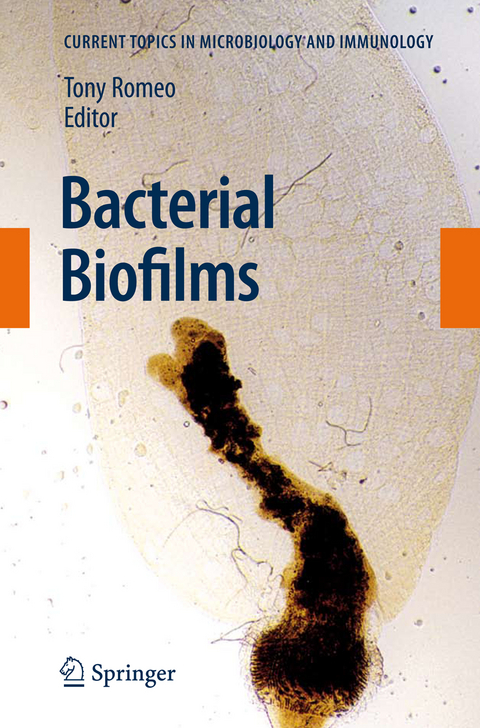
Bacterial Biofilms
Seiten
2010
|
1. Softcover reprint of hardcover 1st ed. 2008
Springer Berlin (Verlag)
978-3-642-09469-9 (ISBN)
Springer Berlin (Verlag)
978-3-642-09469-9 (ISBN)
Throughout the biological world, bacteria thrive predominantly in surface-attached, matrix-enclosed, multicellular communities or biofilms, as opposed to isolated planktonic cells. This choice of lifestyle is not trivial, as it involves major shifts in the use of genetic information and cellular energy, and has profound consequences for bacterial physiology and survival. Growth within a biofilm can thwart immune function and antibiotic therapy and thereby complicate the treatment of infectious diseases, especially chronic and foreign device-associated infections. Modern studies of many important biofilms have advanced well beyond the descriptive stage, and have begun to provide molecular details of the structural, biochemical, and genetic processes that drive biofilm formation and its dispersion. There is much diversity in the details of biofilm development among various species, but there are also commonalities. In most species, environmental and nutritional conditions greatly influence biofilm development. Similar kinds of adhesive molecules often promote biofilm formation in diverse species. Signaling and regulatory processes that drive biofilm development are often conserved, especially among related bacteria. Knowledge of such processes holds great promise for efforts to control biofilm growth and combat biofilm-associated infections. This volume focuses on the biology of biofilms that affect human disease, although it is by no means comprehensive. It opens with chapters that provide the reader with current perspectives on biofilm development, physiology, environmental, and regulatory effects, the role of quorum sensing, and resistance/phenotypic persistence to antimicrobial agents during biofilm growth.
Biofilm Development with an Emphasis on Bacillus subtilis.- Physiology of Microbes in Biofilms.- Environmental Influences on Biofilm Development.- Quorum Sensing and Microbial Biofilms.- Innate and Induced Resistance Mechanisms of Bacterial Biofilms.- Multidrug Tolerance of Biofilms and Persister Cells.- Biofilms on Central Venous Catheters: Is Eradication Possible?.- Role of Bacterial Biofilms in Urinary Tract Infections.- Shifting Paradigms in Pseudomonas aeruginosa Biofilm Research.- Staphylococcal Biofilms.- Yersinia pestis Biofilm in the Flea Vector and Its Role in the Transmission of Plague.- Escherichia coli Biofilms.
| Erscheint lt. Verlag | 23.11.2010 |
|---|---|
| Reihe/Serie | Current Topics in Microbiology and Immunology |
| Zusatzinfo | XII, 294 p. 36 illus., 21 illus. in color. |
| Verlagsort | Berlin |
| Sprache | englisch |
| Maße | 155 x 235 mm |
| Gewicht | 468 g |
| Themenwelt | Medizin / Pharmazie ► Medizinische Fachgebiete ► Mikrobiologie / Infektologie / Reisemedizin |
| Medizin / Pharmazie ► Medizinische Fachgebiete ► Pharmakologie / Pharmakotherapie | |
| Studium ► Querschnittsbereiche ► Infektiologie / Immunologie | |
| Naturwissenschaften ► Biologie ► Mikrobiologie / Immunologie | |
| Schlagworte | Antibiotics • Bacillus subtilis • Bacteria • Biofilm • biofilm development • Diseases • Escherichia coli • Infection • Infections • Infectious • infectious disease • Infectious Diseases • Influence • Physiology • quorum sensing • Research |
| ISBN-10 | 3-642-09469-4 / 3642094694 |
| ISBN-13 | 978-3-642-09469-9 / 9783642094699 |
| Zustand | Neuware |
| Haben Sie eine Frage zum Produkt? |
Mehr entdecken
aus dem Bereich
aus dem Bereich
Buch | Softcover (2023)
Lehmanns Media (Verlag)
19,95 €


